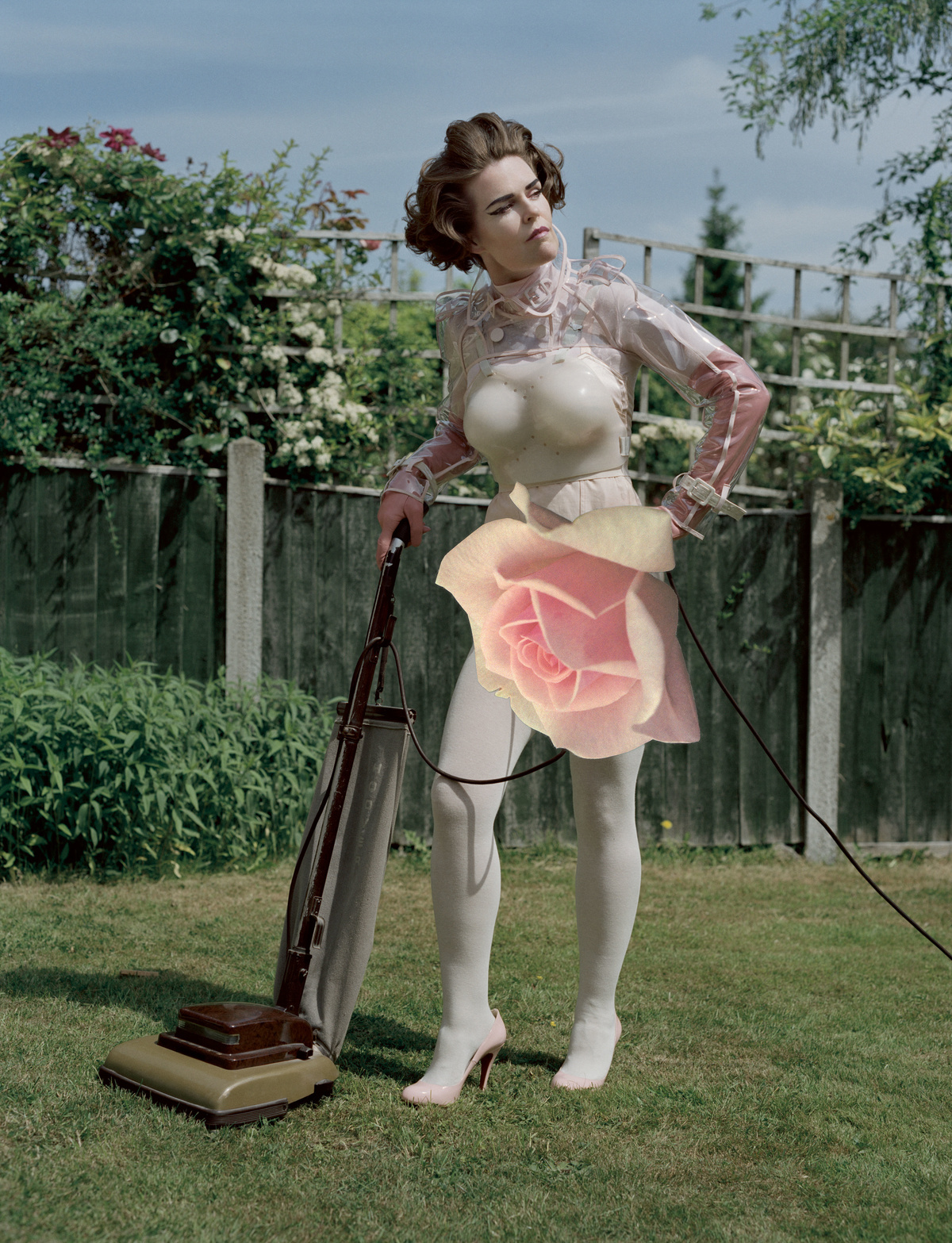R is for Richard
“The collection was based on a character in Linder Sterling’s Neo Romantic collages who we named ‘Tan-ya’,” explains Richard. “Linder transported her from a life of 50s suburban soft porn drudgery and onto the catwalk.” Best known for her explicit album artwork for the Buzzcocks Orgasm Addict, and the fanzine Secret Public co-founded with Jon Savage, Linder’s genius was evident in the prints. Stunning abstract black and white photomontages of female nudes lifted from various vintage erotic magazines were superimposed with gargantuan floral prints and used on red carpet gowns, T-shirts and flasher macs. The artist also adorned sheer eye-masks with garter clips that swung sexily as each girl walked. A slash of coral lips, ruffled hair, white tights and flesh coloured shoes completed the 60s science fiction feel. Like Servalan from Blake 7 these are clothes for a woman who uses her sex and charm to get exactly what she wants. Uptight and restrained whilst simultaneously loose and immoral, the clothes are positively perverted and sickeningly stuffy. You can imagine Shirley Valentine secretly trying on the vinyl mackintosh whilst talking to her kitchen wall, or your neighbour hoovering the lawn and stirring her husbands sugary tea clad only in a garter eye mask and split thigh skirt. A bit Jane Jetson, a bit Carry On, this is sexy suburbia where wife swapping parties and dogging days out are the norm. Richard first met Linder eight months previously when she came to his studio to borrow an outfit for a shoot in British Vogue. She gravitated towards a bronze lamé shirt because it reminded her of one that her best friend Morrissey wore during his ‘Your Arsenal’ tour in the 90s. Richard had attended the same tour when it came to London, and reminiscing Linder and he hit it off immediately with Richard later asking her to collaborate. “Working with Linder was a complete dream come true,” gushes Richard. “Apart from being hilarious, generous, compassionate and fascinating, she represents a type of anti-hero I admire.” Like kindred spirits, designer and artist got to know each other via creative brainstorming sessions on text and email, discussing the role of glamour and the ‘outsider’ in art. Yet somehow all discussion boomeranged back to the flame both harbor for British singer, songwriter Morrissey.
My work represents a powerful idiosyncratic character that acknowledge the past, but embraces the future.
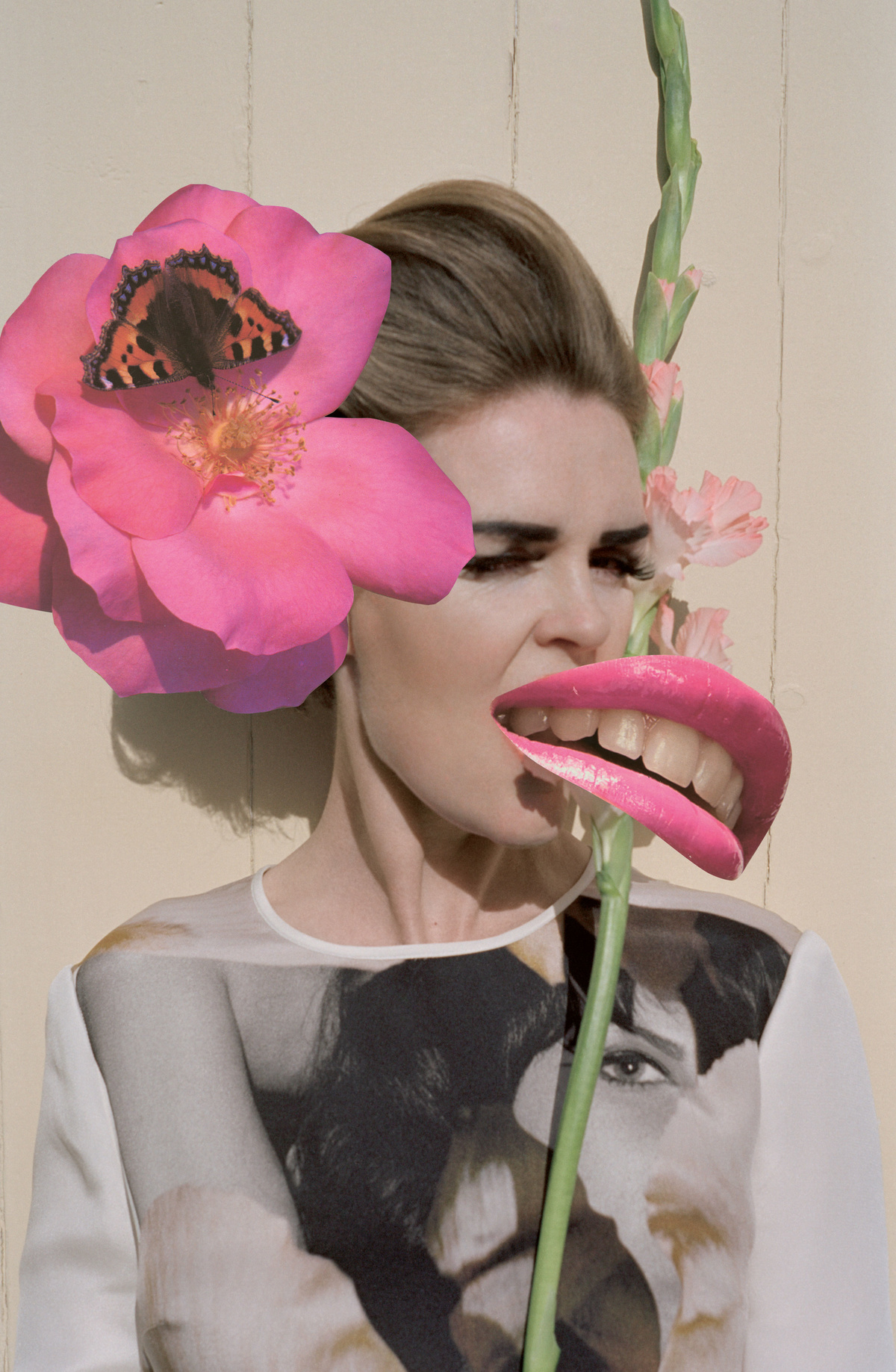
Linder and Morrissey have been close friends since 1976 and Linder is immortalised in The Smiths’ song Cemetery Gates, where Morrissey writes ‘Keats and Yeats are on your side, while Wilde is on mine,’ on reflection of their literary connections. Growing up in Perth, Australia, (“The most geographically isolated city in the world”) Richard sought solace in Morrissey’s lyrics, quoting Lucky Lisp, Barbarism Begins at Home, Break up the Family, Hairdresser on Fire and Bigmouth Strikes Again, as just some of his all-time favourites. “I’ve always loved Morrissey,” Richard confirms. “So to work with Linder years later – and to have so much enjoyment from it and to know that she had shown Morrissey our work – I feel a real sense of symmetry and belief in things happening for a reason.” Richard closed the autumn/winter 09 catwalk show with the New York Vocal Remix of The Smiths’ This Charming Man in a fitting tribute to his idol.
Born in 1977, Richard describes himself as a reserved child who expressed himself through his clothes. “Every weekend I’d go charity shopping,” he recalls. “I was really shy so I used clothes as a means to communicate with as little words as possible.” Back then his attire of choice consisted of pyjama shirts, band T-shirts, army pants, and beads. “I used to have a wired curly Kramer [from Seinfeld] do on top,” he says sheepishly of his hair, “and that was at best!” After school he’d hang out at the ‘mini golf’ centre, where he would “play pool and smoke before going home to self-indulgently listen to The Smiths and Morrissey.” Richard moved to London in 1994 and enrolled on the art foundation course at Central Saint Martin’s with the intention of going on to study sculpture, but it was the fashion module that fired his imagination and he later enrolled on a Menswear BA graduating in 2002. Richard went on to assist stylists Camille Bidault Waddington and Alistair Mackie before realising that fashion design was his passion and accepting a Bursary for an MA in Menswear at Central Saint Martins with Louise Wilson, from which he promptly switched to Womenswear.
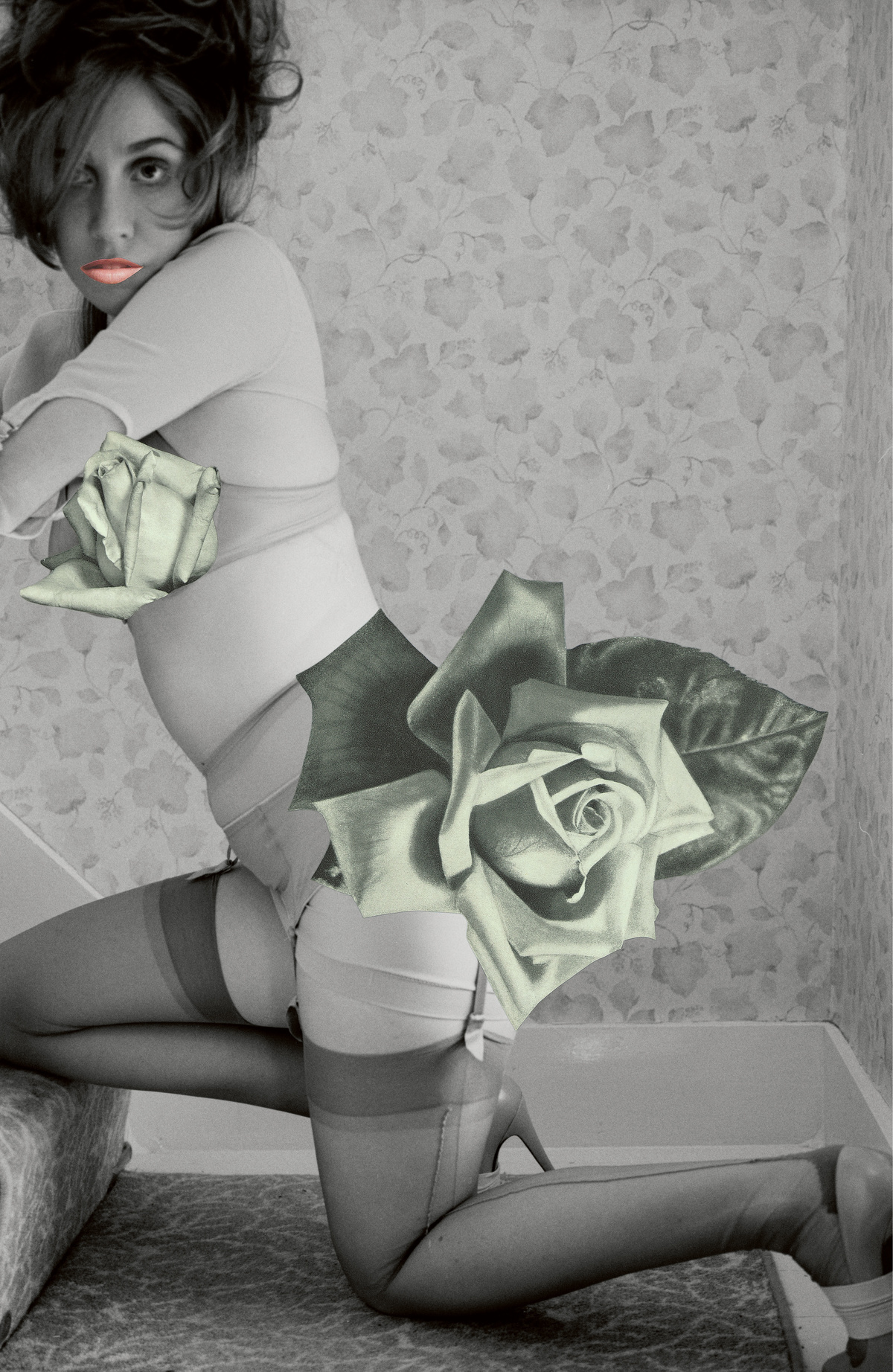
Richard showed his debut collection in 2003 as part of the Fashion East sponsorship at London Fashion Week, and continued to show there for three seasons. The lovely Lulu Kennedy (Fashion East founder) remains his close friend and cohort to this day. During this time he also designed freelance for Louis Vuitton under Marc Jacobs. “It was great,” Richard remembers. “It restored my faith in fashion and made me want to carry on with what I was doing and take it seriously.” New Generation Sponsorship allowed his first on-schedule catwalk presentation at London Fashion Week in 2005, where he continues to show to this day. Championing clean, sporty dressing, grown-up tailoring and minimalist elegance Richard has earned his reputation as one of the most exciting designers on the London catwalk schedule today. His front row regularly consists of fashion A-listers such as Anna Piaggi from Italian Vogue and fashion loving pop star Kanye West. Nicoll has been awarded a number of accolades including Fashion Forward sponsorship for two seasons, the prestigious Andam award and most recently Best Young Designer Of The Year at the Elle Style Awards. Today Richard Nicoll is stocked in more than 30 stores worldwide and boasts an impressive celebrity client list that includes Lily Allen, Sienna Miller, Diane Kruger and Florence Welsh (from Florence and the Machine) amongst others. Next year will see the designer continue his highly sought after highstreet collaboration with Topshop, and expand on plans for a Richard Nicoll menswear line.
“My work represents a powerful idiosyncratic character that acknowledges the past but embraces the future,” Richard continues. “I have a strong idea of the kind of woman I design for. A woman who is strong, an independent thinker, creative, idiosyncratic and who celebrates individuality over generic ideals of status and sexuality.” Linder Sterling was therefore a natural fit. In the shoot for i-D Linder became the very embodiment of her artwork – a luscious 1950s housewife and bosomy suburban queen, with a flash of bright red lipstick and a majestic shampoo and set. “She perfectly represents the idea of my woman who acknowledges her past but remains ageless, optimistic and forward thinking,” says Richard. “If Linder were less interested generally, she could have become a post punk cliché but to me she represents pure modernity and inspiration.”
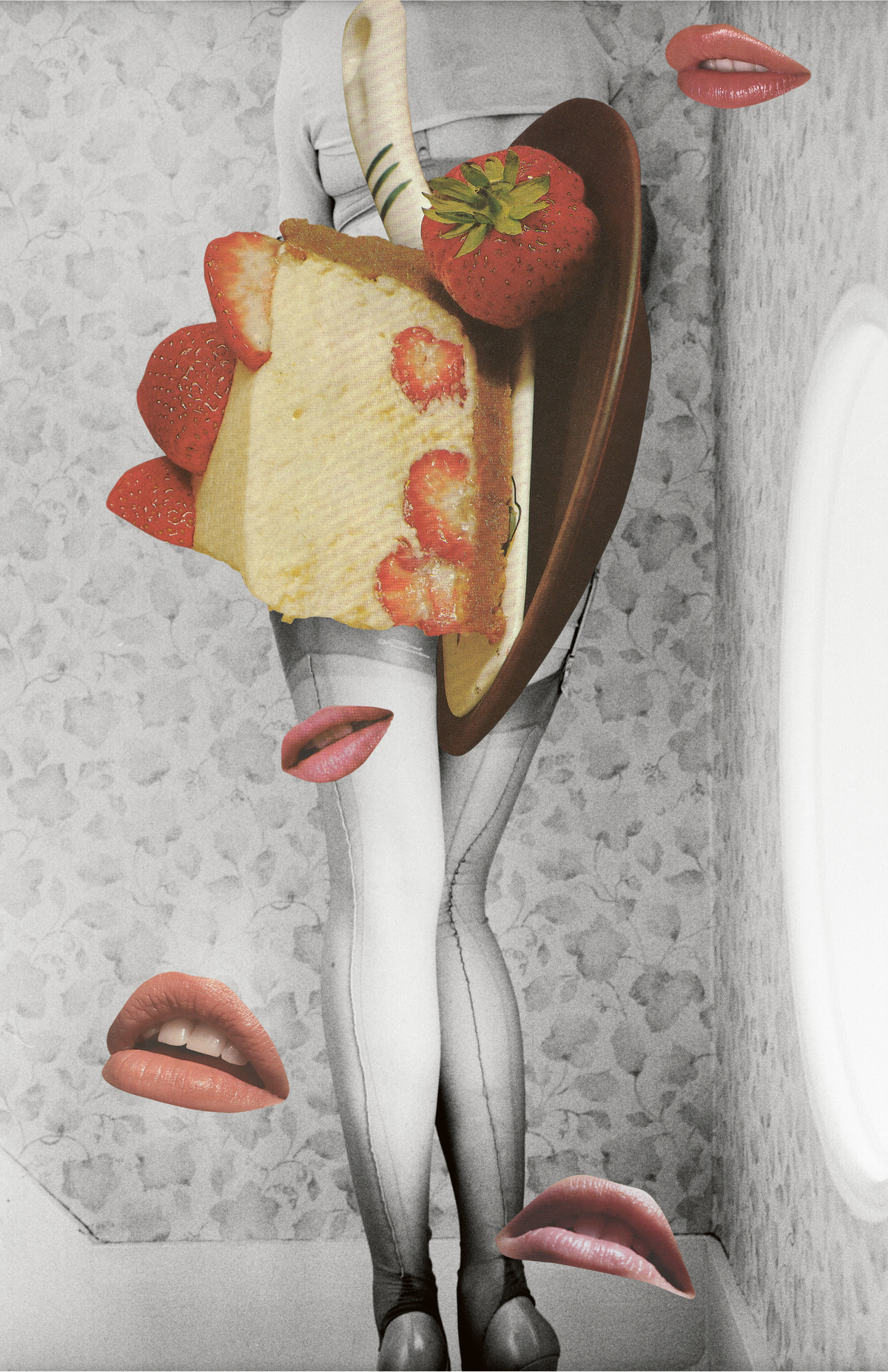
L is for Linder
From Metroland to Linderland
Text Linder Sterling
“I first wore Richard Nicoll’s designs for a Vogue shoot – there was an editorial feature on ‘gangs’ and I was part of Stuart Shave’s art gang. I wore a very Morrissey-esque shirt of Richard’s and was photographed draped over a packing case marked ‘fragile’. A sort of glam yet industrial version of The Death of Chatterton. Richard then got in touch to ask if I’d be interested in collaborating with him and I immediately said yes – the time felt right, Richard felt right. It seemed as if everything could finally come full circle – I’d always used the female form within my work from as long ago as the mid seventies, and I was curious to see the possibilities of that work becoming available for women to wear. It happened according to plan and I recently saw Sienna Miller wearing a Linder montage top on American TV. I liked the way that Linder breasts covered Sienna’s breasts as she talked about GI Joe. For Richard’s collection, we used a colour palette based in part upon remedial underwear from the 1930s – the same period as the house used for the i-D shoot. I’ve always been interested in what happens underneath the visible and the history of the bra tells us all. When I was young, every sitcom on television seemed to be based on the man getting the bra off the dolly bird, now whole industries are based on getting them on again. It’s a wonder that Morrissey’s line, ‘Let me get my hands on your mammary glands’, hasn’t been commandeered by Playtex by now.
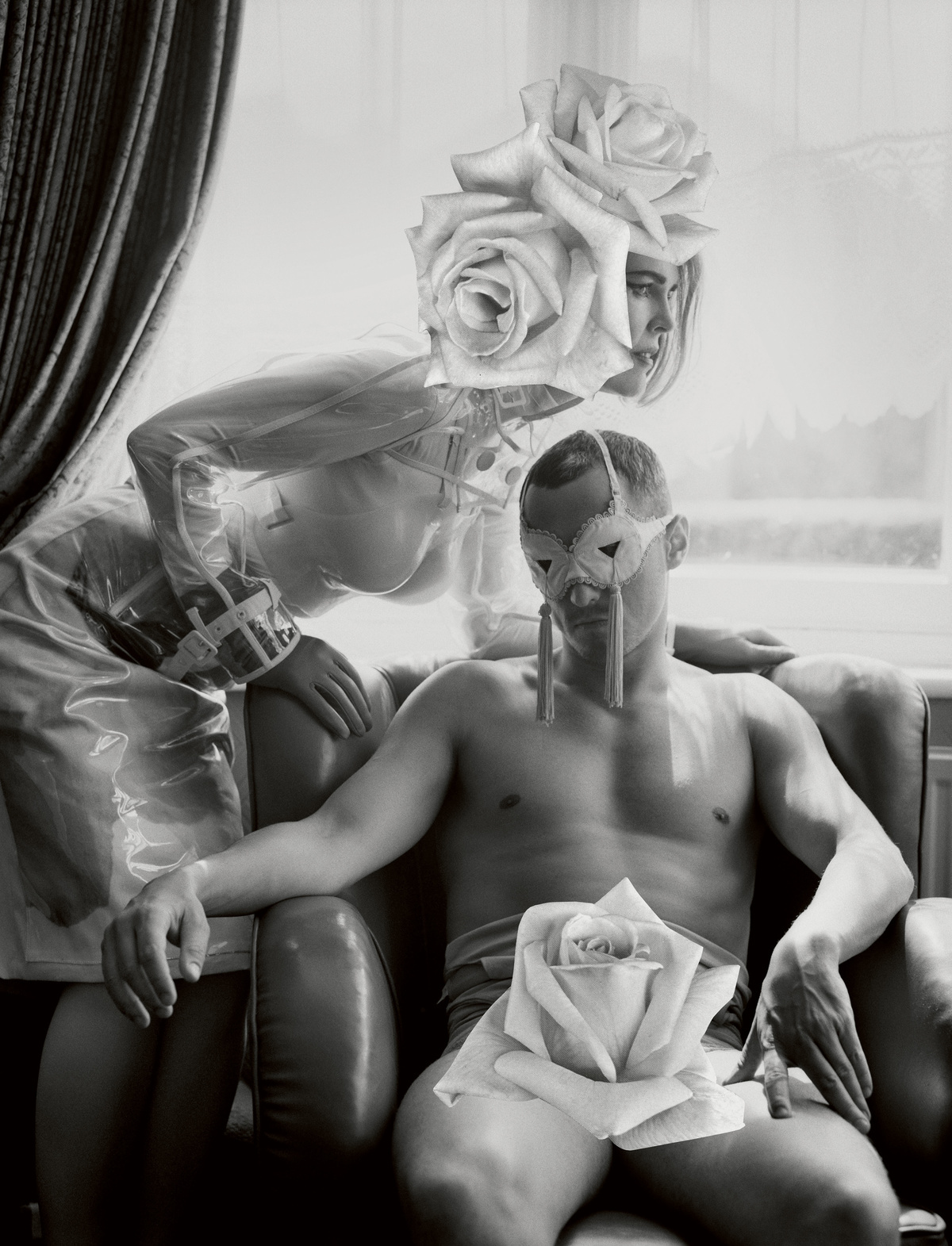
The original series of collages that were used for Richard’s designs were made from negatives that I’d acquired through auction. They were from various glamour photography sessions’ and because the model had ‘tan lines’, I had to pay more. The tan line is similar to putting bras back onto women’s bodies now to re-introduce eroticism after the cull of laddism. Now a certain generation of men long for tan lines and the eroticism of life before the spray tan – you see, maybe St Tropez Tan have got it all wrong? The whole point of the erotic is to delay accessibility to the female, whether that’s the rays of sun or via her undergarments. The stylist on the shoot, Jacob K, understood this and for Tim’s photographs he wrapped me up like a Woman Who Fell To Earth sort of Pass-the-Parcel. It only works for men of a certain age – probably not the average i-D readership, but Jacob and I knew what we were after -as did Tim Walker when we finally came to shoot. Tim has a way of working that’s very literary. As we moved through each room of the house that he’d found, he always asked for the story, my narrative. We were in deepest darkest Metroland and the task was to document the journey to Linderland. We only had one day to shoot all of the photographs so we worked relatively quickly and spontaneously. Tim uses natural light; he’s the absolute master of that. I held backbends in a Richard Nicoll mac and Louboutin boots and as Tim switched from camera to camera, my mother’s words about having to suffer to be beautiful, rang in my ear.

When it came to collaging Tim’s photographs, it involved a sort of psychological dislocation, so that I could look at the images of myself as a series of found objects. I often use myself as a found object within my work, it’s like doing the psychic splits, you divide yourself in half so that you become object and subject simultaneously. I used scissors, scalpel, Pritt and a copy of The Rose Annual to make the collages. Tim was extremely happy to let go and let me do whatever I wanted to with his photographs and that trust in itself was very liberating. Jacob K’s styling too helped to create layers of impenetrable clothing. I’m happiest when the sartorial reflects the psychological.
I dressed in meat at The Hacienda and sang onstage there on Bonfire Night. No one from Factory was particularly happy but it beat the civic firework display.
I bought the breastplate in the photographs in 1981 from a martial arts shop in Manchester. I probably didn’t eat for a week in order to afford it. I later wore it to the opening of The Hacienda over a back to front black cardigan and a World’s End divided black skirt, sort of widow’s weeds meets Helmut Newton’s prosthetic fetish. It made the bus driver that night happy, even if no one else was. Months later I dressed in meat at The Hacienda and sang onstage there on Bonfire Night. No one from Factory was particularly happy but it beat the civic firework display.
Morrissey and I were always curious about the human parade. We used to watch people walking through Manchester and we were always most curious about the ones who were most at ease in their skins.
I remember i-D being very important when it first appeared around the same time. It was so simple, so direct, just page after page of what people were wearing in Britain – as much anthropology as anything else. It was like the Mass Observation Movement of the thirties who used to count the number of hatpins seen in a tearoom in Bolton. i-D had that same curiosity about what we wore and why. Morrissey and I were always curious about the human parade, we used to watch people walking through Manchester streets and we were always most curious about the ones who were most at ease in their skins. We were both so ill at ease in our own bodies. We always looked beyond the clothes to the way certain people walked; we were convinced that we could tell if people were having sex by the sway of the pelvis. Needless to say, our pelvises were immobilised at birth. It automatically happened if you were northern and had an intellect. No one was allowed to have a library ticket and have sex.

I’m currently working on two performance pieces in collaboration with Richard Nicoll and the musician Stuart McCallum. If Benjamin Britten and Peter Pears had worked at Topshop and lived in Levenshulme then they would have made the same music that Stuart and I make. We’ve been recording in an abandoned music hall here in Morecambe, in the nuclear power station and in a church – all spaces that have, or could soon become, redundant. Stuart and I plug ourselves in and let sounds emerge. Think Britain’s Most Haunted without ghosts, just the two of us with a Gibson SG and a Dictaphone.
Richard Nicoll and Stuart McCallum, were both born in 1977 – which makes one think about history and age. How many wet weekends had I spent in Freeman Hardy and Willis before they opened their eyes to the MySpace world? How many tons of toast burnt? How many lipsticks dropped down the loo? I had spent my entire life losing my comb behind a chest of drawers in order to one day meet these men… Born in the mid 1950s I am classically mid-Century Modern and I realise that I’m now officially vintage. Soon, inevitably, I shall become antique.
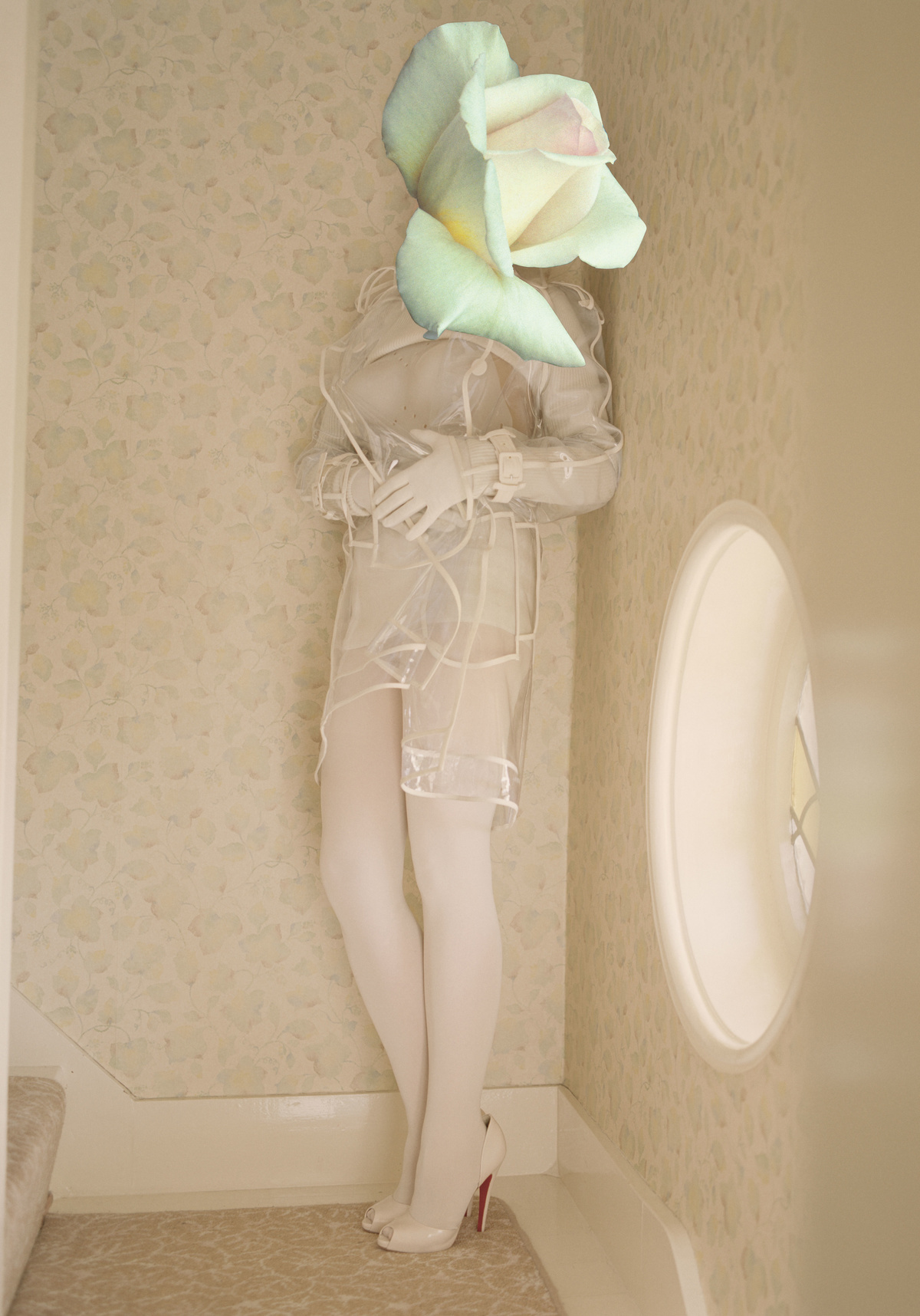
In October, Stuart and I will make a small but significant performance at Tate St Ives. One of my large collage pieces from 2006 that later migrated to one of Richard’s dresses is included in the show there. The show is called The Dark Monarch and it does what it says on the tin – it’s about magic and modernity, two qualities that Sooty and I have always presumed to be our own personal property.
I’m also developing a far larger performance piece with the Glasgow based gallery owner, Sorcha Dallas. Again, Stuart and Richard will be the prime collaborators, and I will finally get to play Bob Fosse. Life was never a cabaret, old chum, and out of necessity life’s been half Alphaville and half vaudeville. À Bientôt!”
Credits
Text Holly Shackleton
Photography Tim Walker
Styling Jacob K
Artwork Linder Sterling
Hair Stylist Malcom Edwards
Make up Artist Sam Bryant
Photographic assistance Francesca Foley
Styling assistance Siobhan Lyons and Sivan Currie
Hair assistance Gerard Hawe
Location greatnorthernlocations.com
Photographic printing by Touch Digital
Models Linder Sterling, Saranne Woodcroft and Richard Nicoll
